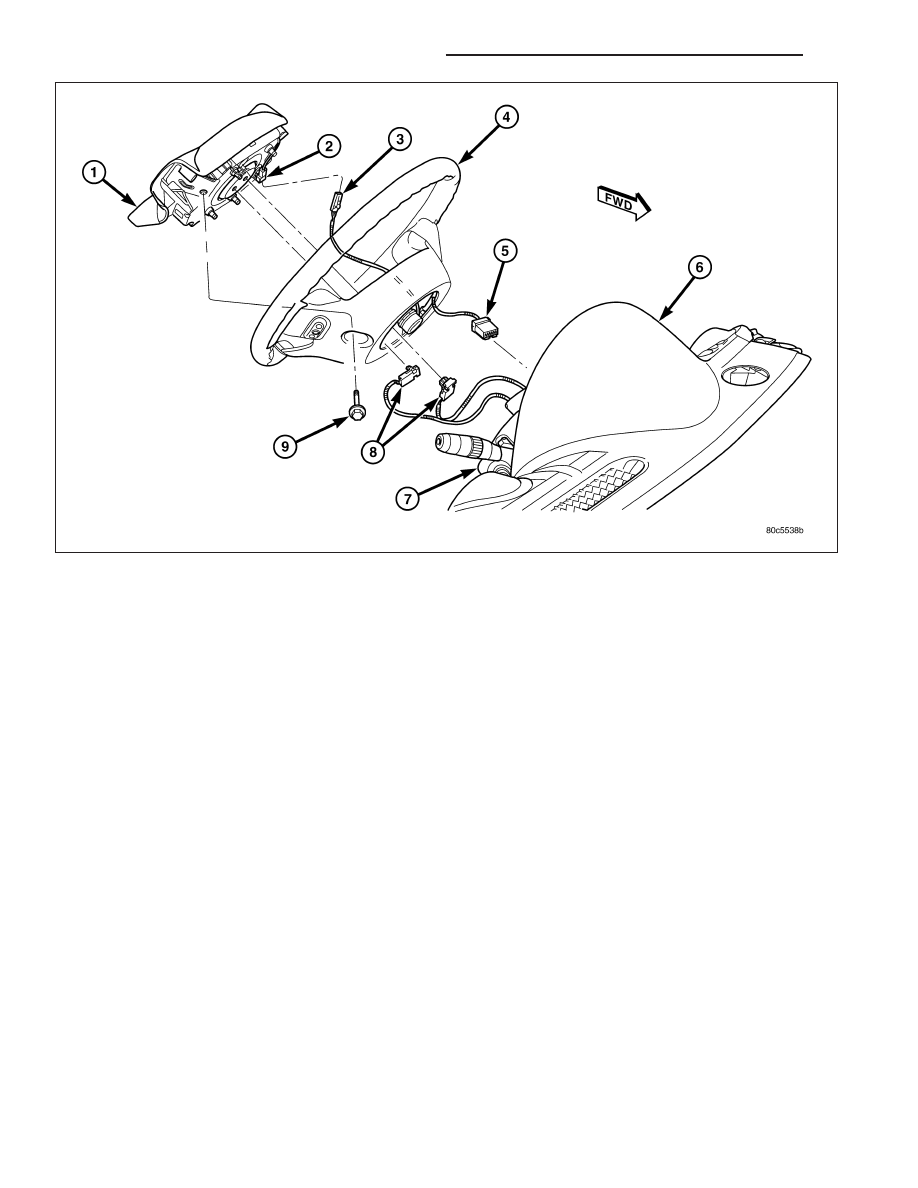Jeep Liberty KJ. Manual - part 242

1. Disconnect and isolate the battery negative cable. Wait two minutes for the system capacitor to discharge before
further service.
2. From the underside of the steering wheel, remove the two screws (9) that secure the driver airbag (1) to the
steering wheel armature.
3. Pull the driver airbag away from the steering wheel (4) far enough to access the three electrical connections on
the back of the airbag housing.
4. Disconnect the steering wheel wire harness connector (3) for the horn switch from the horn switch feed pigtail
wire connector (2), which is located on the back of the driver airbag housing.
CAUTION: Do not pull on the clockspring pigtail wires or pry on the connector insulator to disengage the
connector from the driver airbag inflator connector receptacle. Improper removal of these pigtail wires and
their connector insulators can result in damage to the airbag circuits or connector insulators.
5. The clockspring driver airbag pigtail wire connectors (8) are secured by integral latches to the airbag inflator
connector receptacles, which are located on the back of the driver airbag housing. Depress the latches on each
side of each connector insulator and pull the insulators straight out from the airbag inflator to disconnect them
from the connector receptacles.
6. Remove the driver airbag from the steering wheel.
7. If the driver airbag has been deployed, the clockspring must be replaced. (Refer to 8 - ELECTRICAL/RE-
STRAINTS/CLOCKSPRING - REMOVAL).
INSTALLATION
WARNING: To avoid personal injury or death, on vehicles equipped with airbags, disable the supplemental
restraint system before attempting any steering wheel, steering column, airbag, occupant classification sys-
tem, seat belt tensioner, impact sensor, or instrument panel component diagnosis or service. Disconnect
and isolate the battery negative (ground) cable, then wait two minutes for the system capacitor to discharge
before performing further diagnosis or service. This is the only sure way to disable the supplemental
restraint system. Failure to take the proper precautions could result in accidental airbag deployment.
8O - 274
RESTRAINTS - SERVICE INFORMATION
KJ